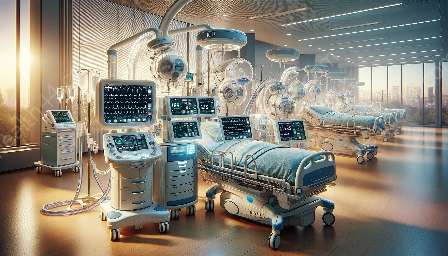Hemodialysis machines are essential life support systems utilized in medical facilities to treat patients suffering from kidney failure and related conditions. These vital medical devices and equipment play a critical role in filtering and purifying the blood of individuals who are unable to adequately perform these functions due to compromised kidney function.
Understanding Hemodialysis Machines
Hemodialysis machines are complex medical instruments designed to replicate the functions of a healthy kidney by filtering waste products, excess fluids, and toxins from the blood. This process, known as hemodialysis, is a life-sustaining treatment for individuals with end-stage renal disease (ESRD) or acute kidney injury.
Key Components of Hemodialysis Machines
The components of a standard hemodialysis machine include:
- Blood Pump: This mechanism is responsible for keeping the blood flowing through the dialyzer, where filtration occurs.
- Dialyzer: Also known as an artificial kidney, the dialyzer is the core component of the machine, facilitating the physical and chemical processes involved in blood filtration and purification.
- Control Unit: This component regulates the flow rates, pressure, and other parameters essential for safe and efficient hemodialysis.
- Water Treatment System: To ensure the purity of the water used in the filtration process, hemodialysis machines are equipped with advanced water treatment systems to prevent contamination and infection.
Integration with Life Support Systems
Hemodialysis machines form a crucial part of life support systems, especially in the context of patients with compromised kidney function. These machines are utilized in intensive care units (ICUs) and other critical care settings to provide continuous renal replacement therapy (CRRT) or conventional hemodialysis for patients experiencing acute kidney injury or in need of ongoing renal support.
Advancements in Hemodialysis Technology
Over the years, significant advancements have been made in hemodialysis machine technology, leading to improved efficiency, safety features, and patient comfort. Modern machines are equipped with user-friendly interfaces, automated monitoring systems, and connectivity options for streamlined data management and remote monitoring.
Regulatory Considerations for Hemodialysis Machines
Given the critical nature of hemodialysis machines in patient care, regulatory bodies such as the FDA (Food and Drug Administration) closely monitor the design, manufacturing, and performance of these devices to ensure compliance with stringent quality and safety standards.
Conclusion
Hemodialysis machines play a pivotal role in the treatment and management of kidney failure, delivering life-saving hemodialysis therapy to patients in need. As essential components of life support systems, these medical devices and equipment continue to evolve, driving innovation and enhancing the quality of care for individuals battling renal disorders.


